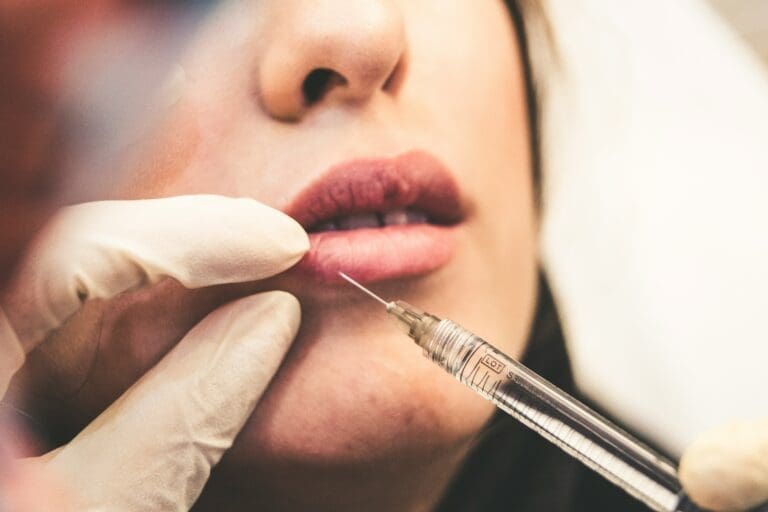Are Nasal Infections enough reason to get a Nose Job?

According to the American Society of Plastic Surgeons (ASPS), nose reshaping is one of the top five most popular plastic surgery procedures in the country today. But what most people don’t realize is that many rhinoplasty and nose reshaping procedures occur for medical health as well as cosmetic reasons.
Consider this: the Centers for Disease Control (CDC) reports that as many as 12.5% of all adults may be suffering from sinusitis, a type of upper respiratory nasal infection, at any given time. That is nearly 31 million adults!
But is chronic or recurrent sinusitis a good enough reason to get a nose job? Let’s find out what the experts say!
Is Sinusitis Reason Enough to Seek Rhinoplasty?
The Journal of Canadian Family Physicians highlights just how serious sinusitis is – as many as 40 episodes occur for every 1,000 adults.
That is a lot of people living in misery every day, with commonly reported sinusitis side effects ranging from fuzzy thinking to headache, runny or stuffy nose to earache, sore throat to daytime lethargy and sleepiness.
According to rhinoplasty expert, Mark Glasgold, one of the most compelling reasons for seeking rhinoplasty is for medical health reasons. After all, it is hard to enjoy life and live up to your fullest potential when you wake up feeling awful day after day, month after month.
Often, the Glasgold Group sees patients who are seeking out a consultation specifically to address chronic recurrent sinusitis that is non-responsive to other medical treatment options.
How Can Rhinoplasty Help Reduce Incidence of Nasal Infection?
As the Journal of the American Medical Association (JAMA Network) points out, rhinoplasty combined with sinus surgery is both eminently achievable and very effective.
In one study of 44 patients who elected to undergo a rhinoplasty procedure with minimally invasive endoscopic sinus surgery, a full 92 percent stated they would recommend this approach and 71 percent of patients stating they achieved significant improvement in their sinus symptoms post-surgically.
But perhaps the most important take-away from this research study is that combining rhinoplasty with endoscopic sinus surgery does not add any additional risk for patients who choose to do both during a single surgery.
Functional Rhinoplasty Versus Cosmetic Rhinoplasty: Is There a Difference?
When rhinoplasty or revision rhinoplasty is performed by a board-certified expert in such procedures, the ultimate outcome goal is to meet the patient’s appearance goals and optimize nasal function.
Unfortunately, many patients who seek consultation at The Glasgold Group for revision rhinoplasty do so because their initial rhinoplasty procedure placed emphasis on cosmetic (appearance) over functional (medical) outcomes.
When there are nasal issues such as narrowed airways, polyps, and other obstructions or health issues such as chronic or recurrent sinusitis, these can and should be addressed at the same time as desired cosmetic alterations are being made.
The nose is a sensitive, delicate and diminutive part of the body and each surgical procedure will inevitably leave behind some amount of scar tissue. This means follow-up procedures become increasingly challenging, requiring the deftest and knowledgeable hand to navigate around existing scar tissue and minimize the formation of new scar tissue while working to achieve the patient’s goals.
If a rhinoplasty or revision rhinoplasty is not planned with extreme care, the formation of fresh scar tissue can also actually cause obstructions in the nasal passageways that increase the patient’s health issues post-procedure.
Here, the important takeaway is that there should never be any difference between functional (medical) and cosmetic (appearance) rhinoplasty or revision rhinoplasty.
Steps to Rhinoplasty for Treating Sinusitis
The field of plastic, cosmetic and reconstructive surgery is advancing rapidly today.
Every year, new minimally invasive approaches provide patients with decreased recovery time, increased success in meeting health and appearance goals and fewer overall risks from anesthesia and complications.
There are two basic approaches to rhinoplasty or revision rhinoplasty: open and closed. There are advantages to each, including the option to perform the procedure endoscopically if a closed rhinoplasty is the right option. The specific structural issues causing your chronic or recurrent sinusitis and nasal infection health issues will necessarily dictate what approach, open or closed rhinoplasty, is the best way to resolve these issues permanently.
For example, if you have a deviated septum, which is a frequent culprit in chronic or recurrent sinusitis, an open approach will likely be recommended to correct this delicate structural abnormality and restore optimal sinus health.
For patients seeking a revision rhinoplasty for functional and/or cosmetic purposes, an open approach is often recommended to more easily visualize existing scar tissue and minimize the formation of any further scar tissue post-procedurally.
During your initial consultation with Dr. Glasgold, he will examine your nose and facial structure, learn about your medical history and sinusitis issues, discuss any appearance goals that you also have and answer your questions about your procedure.
You will be given steps to prepare for your rhinoplasty or revision rhinoplasty procedure and it will be important for you to follow these to the letter. You can also learn about insurance and financing options and even schedule your procedure date during your consultation if you are ready to do so.
About the Glasgold Group Plastic Surgery
Dr. Mark Glasgold, MD, FACS, and Robert Glasgold, MD, FACS are the co-founders and co-medical directors for the Glasgold Group Plastic Surgery. Both are board-certified in facial plastic surgery, a rigorous extra elective step that only a handful of surgeons in the country opt to take.
The Glasgold Group attracts an international clientele for their dual focus in facial plastic and cosmetic surgery plus rhinoplasty and revision rhinoplasty, which together are two of the most difficult procedures to excel at.
Drs. Glasgold and Glasgold consistently receive 4.5 to 5-star ratings across the board in all the major independent review sites, including HealthGrades, Wellness, MakeMeHeal, and DoctorScorecard, among others.









